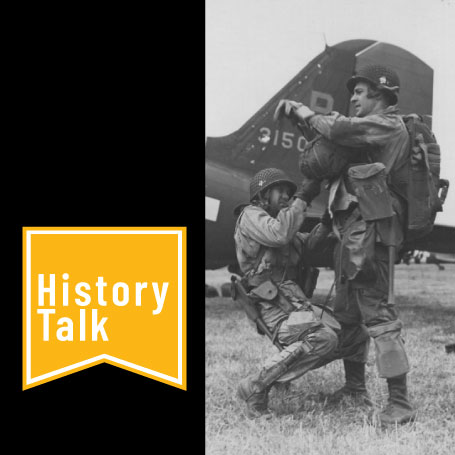Army airborne units were developed to support the concept of vertical envelopment, or the ability to strike an enemy from behind when ground forces could not go around prepared defenses. Born out of response to German success in Holland and Greece, the U.S. Army grew its airborne units from a small test platoon in 1940, through battalion and regimental combat in North Africa and Italy, to multiple combat ready divisions by D-Day. Following the invasion, airborne troops would be deployed during Operation Market Garden and the Battle of the Bulge and earned a reputation for changing the battlefield as soon as they entered it.
Explore how the U.S. Army developed new technology, training, and strategies to overcome challenges and accomplish the mission. Learn how Army airborne troops contributed to Allied turning points during World War II.
Register for this virtual History Talk on December 21, 2022 at 12 p.m. ET
Register for this in-person History Talk on December 21, 2022 at 12 p.m. ET

ELC, Virtual (Zoom)
